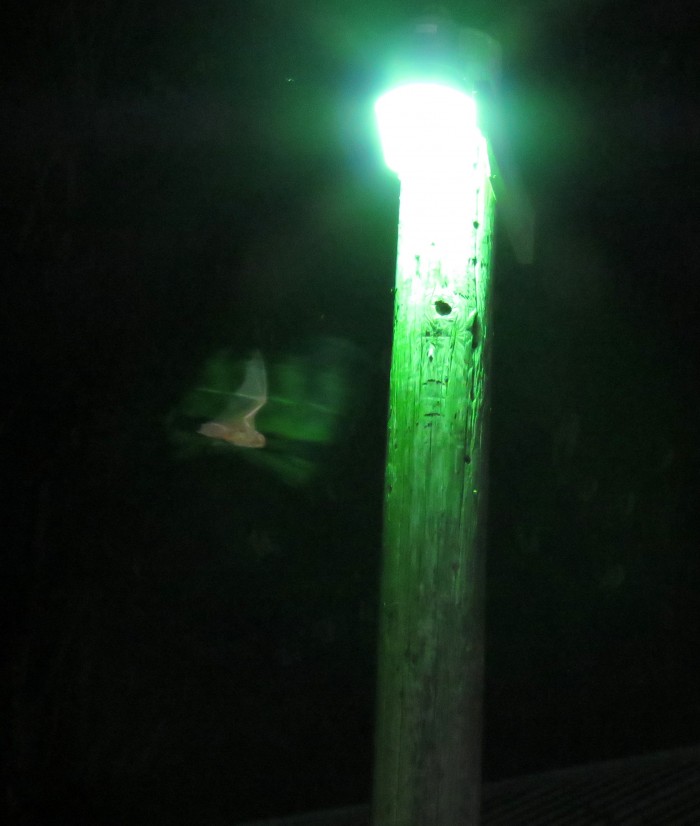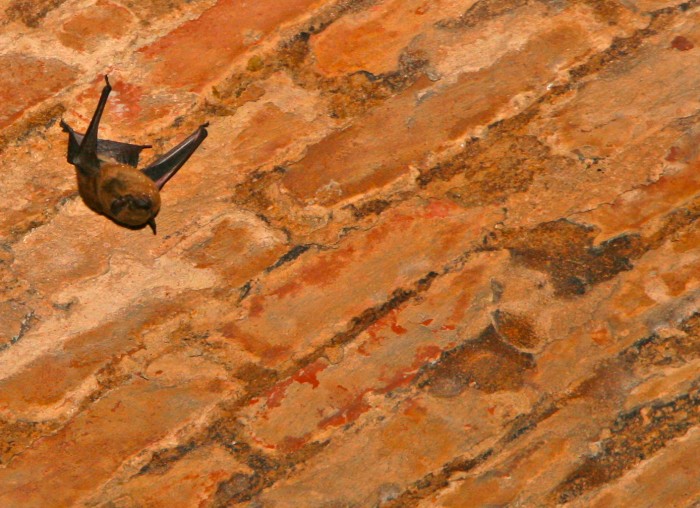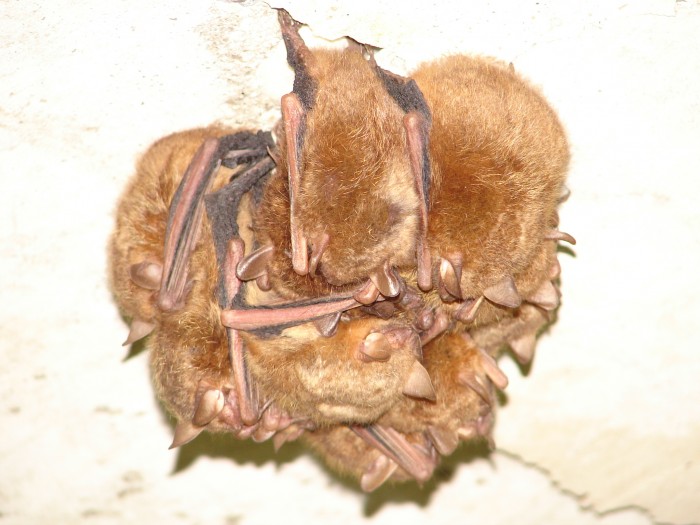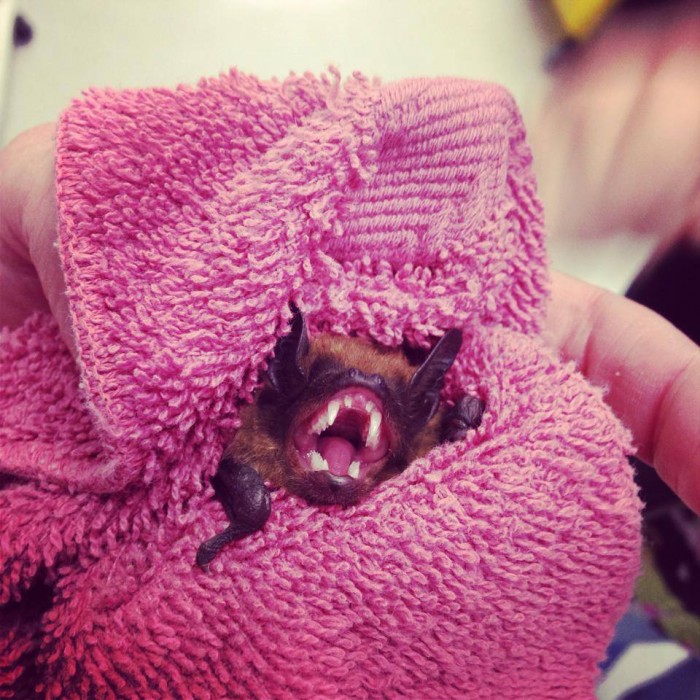Bats are truly one of the most misunderstood animals on Earth. Through the media, movies, television, and legends in many different cultures around the world, they have gotten a bad reputation over the years; for instance, they are accused being blind, bloodthirsty rodents that get stuck in your hair. Not only are these accusations untrue, but bats hold a very important role in ecosystems around the world, while mostly leaving people alone. Bats are the second largest group of mammals after rodents, numbering at roughly 1200 species. They can be found everywhere in the world except at the extreme poles and live in a variety of different habitats.

Bats are the only mammals that are capable of “true” powered flight. Other mammals that seem to fly, like flying squirrels, are only able to glide from one surface to another using flaps of skin. Bats fly by actually moving their limbs and expending energy to do so. Their flight methods and anatomy are different from birds as well. While birds depend on feathers attached to one long limb, bat wings are essentially elongated fingers with a thin layer of skin stretched between them. These thin wings allow the bat to maneuver quickly and with better accuracy.

Many bats also share another trait in common: the use of echolocation. This sense is unique only to a few groups in the animal kingdom and is used to maneuver in dark areas and detect prey. Essentially, each species of bat is capable of emitting a different ultrasonic sound in the form of a high-pitch squeak. The waves created by the sounds come into contact with obstacles and prey, producing echoes that bounce back to the bat. The bat’s brain produces a detailed “sound map” of their surroundings, which they can use to find and even classify prey in complete darkness.

There are ten species of bats that can be found in Maryland, all of which eat insects, but have different strategies for roosting and hibernating during the winter. The little brown bat (Myotis lucifugus), big brown bat (Eptesicus fuscus), long-eared bat (Myotis septentrionalis), and the endangered Indiana bat (Myotis sodalis) tend to live in colonies and will roost and hibernate in dead trees, rock outcroppings, and manmade structures. Other species like the Eastern red bat (Lasuirus borealis) and hoary bat (Lasiurus cinereus) are migratory and only occur in Maryland during the summer. Bats are usually identified by appearance and the type of call they emit.
As stated earlier, bats play an important role in the balance of our ecosystem. Each of our local bats are capable of eating one-third of its body weight in insects each night, so about 1000 bats would eat about 4 tons of insects per year, including mosquitoes and agricultural pests. Fruit-eating bats in other parts of the world play the role of pollinator, ensuring the propagation of important plants. Without bats, we would see an alarming increase in the number of insects and a similarly alarming decrease in fruit production worldwide.

Unfortunately, many bat species are on severe declines due to habitat destruction and disease. In Maryland and the Northeastern US, a particularly brutal disease called white-nose syndrome has killed a large number of bat colonies. The syndrome is caused by a fungus that can be readily seen in the form of white spores on the bat’s face. This fungus compromises the bat’s immune system, causing it to use energy to combat the syndrome. This energy is very precious, especially during hibernation when a bat depends on it to sustain itself until spring arrives. This loss in energy causes the bat to awaken at odd times during the year in search of food to replenish it. This leads to the bat’s death, as there are no active insects during the winter. This problem is intensified in colonial bats, where the fungus can be spread among individuals very quickly. Researchers are currently trying to figure out a solution before many of our bats are gone for good; there have been recent promising results, but much more work needs to be done in the realm of bat conservation.

You can help our local bats! Setting up bat boxes on your property will encourage bats to live in your area – you’ll be providing a service to help an important wildlife species they will repay you with free insect control! A number of different types of boxes are available and you can even build your own. The Susquehannock Wildlife Society will be building a series of bat boxes at the new Wildlife Center in Harford County – donations are welcome to help establish and monitor our bats. Bats are best left alone, but if there are bats in your house and they are causing damage, it is best to call an experienced pest control company that is licensed to work with bats.

